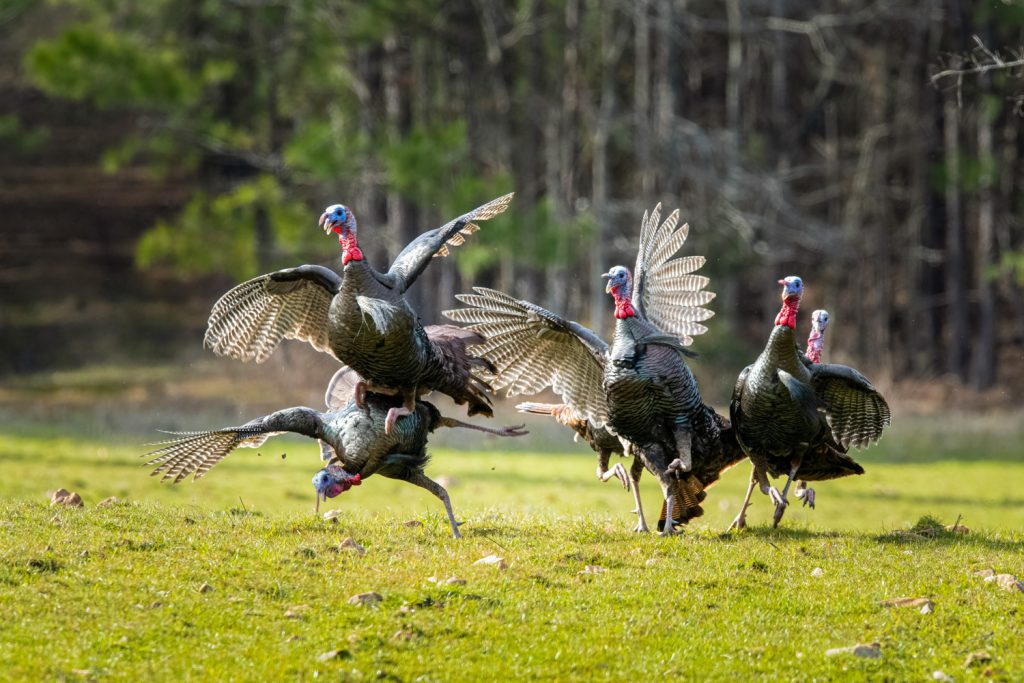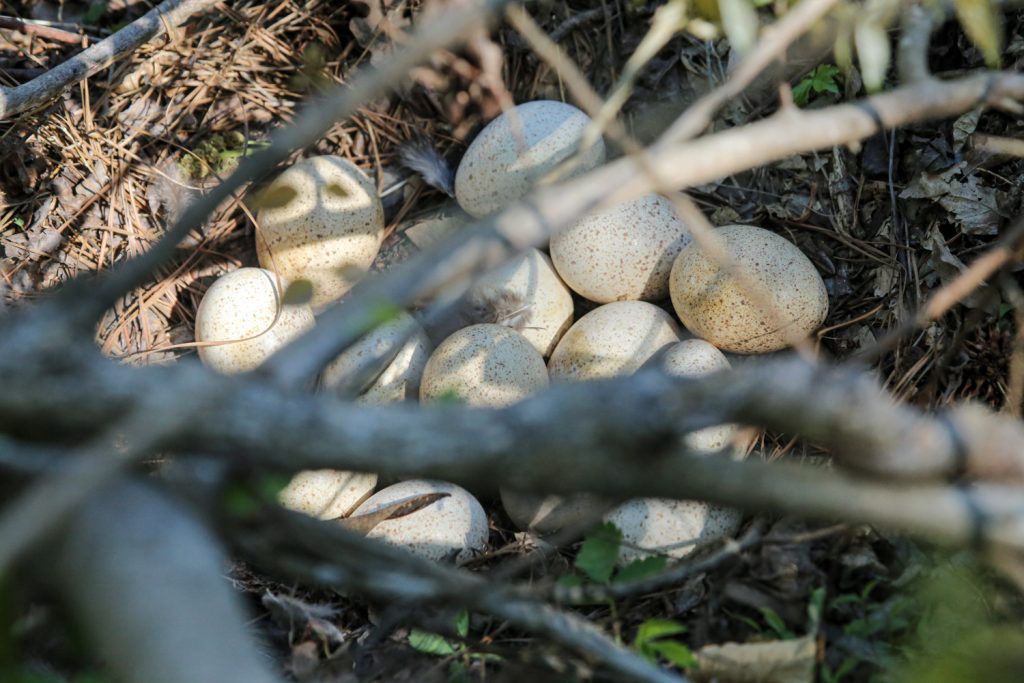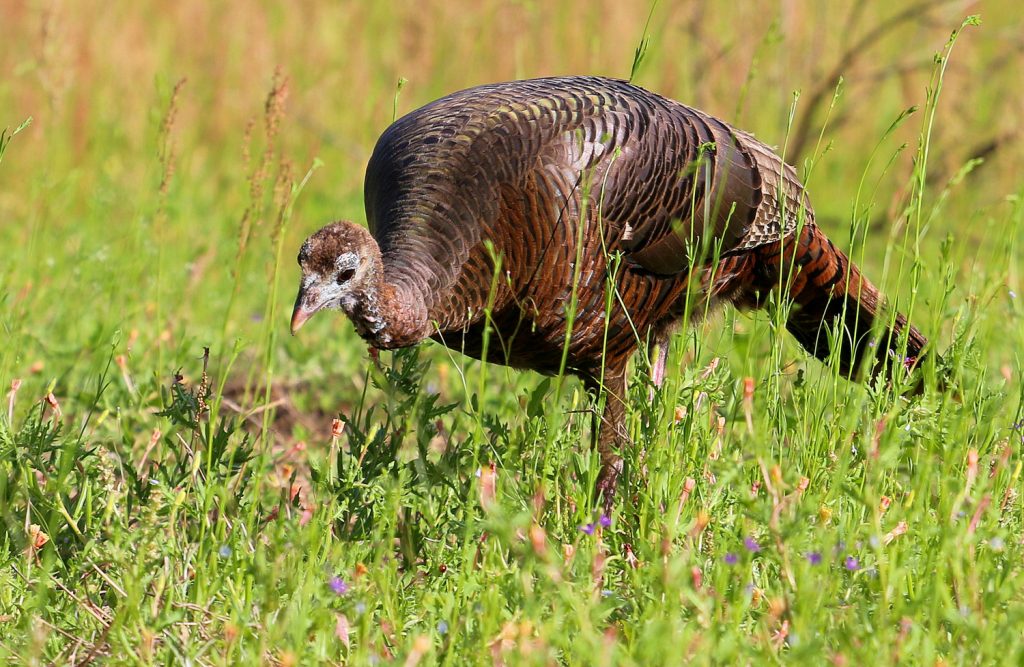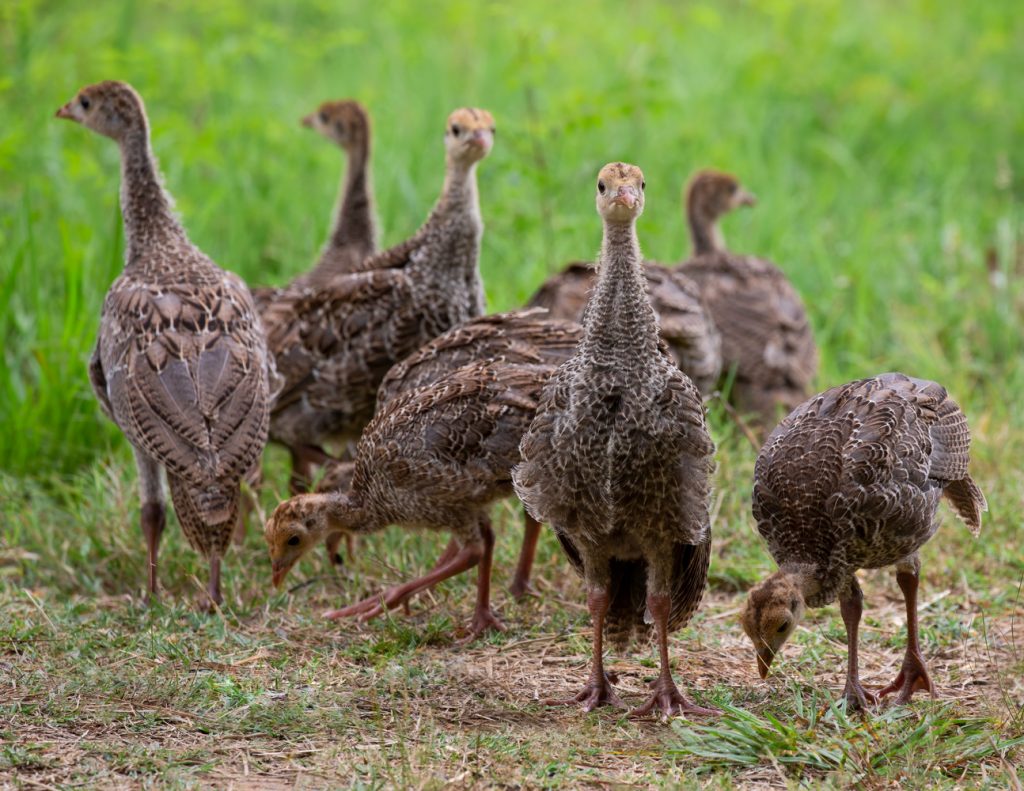Wild Turkey Breeding Cycle
The life of wild turkeys is both fascinating and dynamic.

Dominance and Pecking Order
- Turkeys have home ranges, not territories.
- Birds fight for dominance recognizing individuals within the pecking order while sharing overlapping home ranges.
- Males and females have separate hierarchies.
- Stable pecking orders within flocks of the same sex seem to be common to all wild turkeys subspecies.
Breeding & Courtship
- Breeding behavior is triggered primarily by the increasing day length in spring and subsequent hormonal response.
- Unusually warm or cold spells may accelerate or slow breeding activity slightly.
- Courtship behavior patterns include gobbling and strutting by the males, this attracts the female.
- The hen crouches to select the gobbler for matting, which signals the male to copulate.

The Nesting Process
- Hens become secretive while searching for a site to nest prior to laying eggs.
- Nests are shallow depressions formed by scratching, squatting and laying eggs.
- Moderate dense understory is preferred to allow hens a view, but also provide protection.
- Hens lay between 10-12 eggs during a two week period.
- Continuous incubation begins when the last egg is laid.
- The hen will only leave for a short period to feed and may remain on the nest for several consecutive days.
- Eggs will be incubated for 26-28 days. The hen sits quietly and moves about once an hour to turn and reposition the eggs.
Poults are Born
- Hatching begins with pipping - the poult rotating within the shell, chipping a complete break around the large end of the egg.
- Hens make soft clucks in response at random to begin to imprint the baby birds.
- Imprinting is a special form of learning which facilitates the rapid social development of the poults into adults.
- Damp poults free themselves but dry fully so they can follow the hen away from the nest within 12-24 hours after hatching.

Developing Poult Behavior Timeline:
- Day old poults: learn to respond to the hen’s putt or alarm call before leaving the nest and will respond by freezing or running to hide beneath the hen if she sounds the alarm call
- Within hours: Poults learn to peck at food items by mimicking their mother’s behavior
- Day two: poults are performing most of the characteristic feeding, movement and grooming behavior patterns
- Week one: poults are regularly dusting with the hen
- Week two: Poults are able to fly short distances
- Week three: Poults can roost in low trees with the hen, this change also indicates a change of diet from mostly insects to a higher percentage of plant matter
- Past week six: Poults that survive to this age have a much better chance of surviving to adulthood
- 14 weeks: male and female poults are distinguishable by body size and plumage
- By fall, the pecking order of the sibling groups has been established and the young flocks are ready to enter the social organization of the surrounding population
- Body growth of juveniles ends by the beginning of winter

Approximate Breeding Seasons
Eastern Wild Turkey
Breeding usually begins in late February or early March in its southernmost habitats, but not until April in northern states. The cycle is complete with the hatching of poults by June or as late as mid-summer farther north. Birds that renest may bring off broods as late as August.
Florida (Osceola) Wild Turkey
The reproductive cycle for the Florida wild turkey begins only slightly earlier than for the eastern wild turkey in other southern states. However, in southern Florida, turkeys gobble during warm spells in January, several weeks before actual mating. Egg laying is mainly in March and April with peak hatching occurring in early May.
Rio Grande Wild Turkey
Mating activities for the Rio Grande starts in March and nesting activity is high near the end of April. With the incubation period of 28 days, most poults are present in the last week of May or early June.
Merriam’s Wild Turkey
Some Merriam’s migrate from the foothills of the Rocky Mountains to higher elevations in the summer for breeding and nesting and return to winter in the lower elevations. Movement distances vary but more than 40 miles movements are not unusual. Movements may differ annually and geographically, depending on snow conditions. Movements from wintering areas occur between mid-March and mid-April.
Gould’s Wild Turkey
Gobbling activity for the Gould’s has been documented to begin in April and May in Mexico and from late April into June in New Mexico and in Mexico. The Gould’s turkey has been studied the least and, as a result, has the smallest amount of information available about it.
